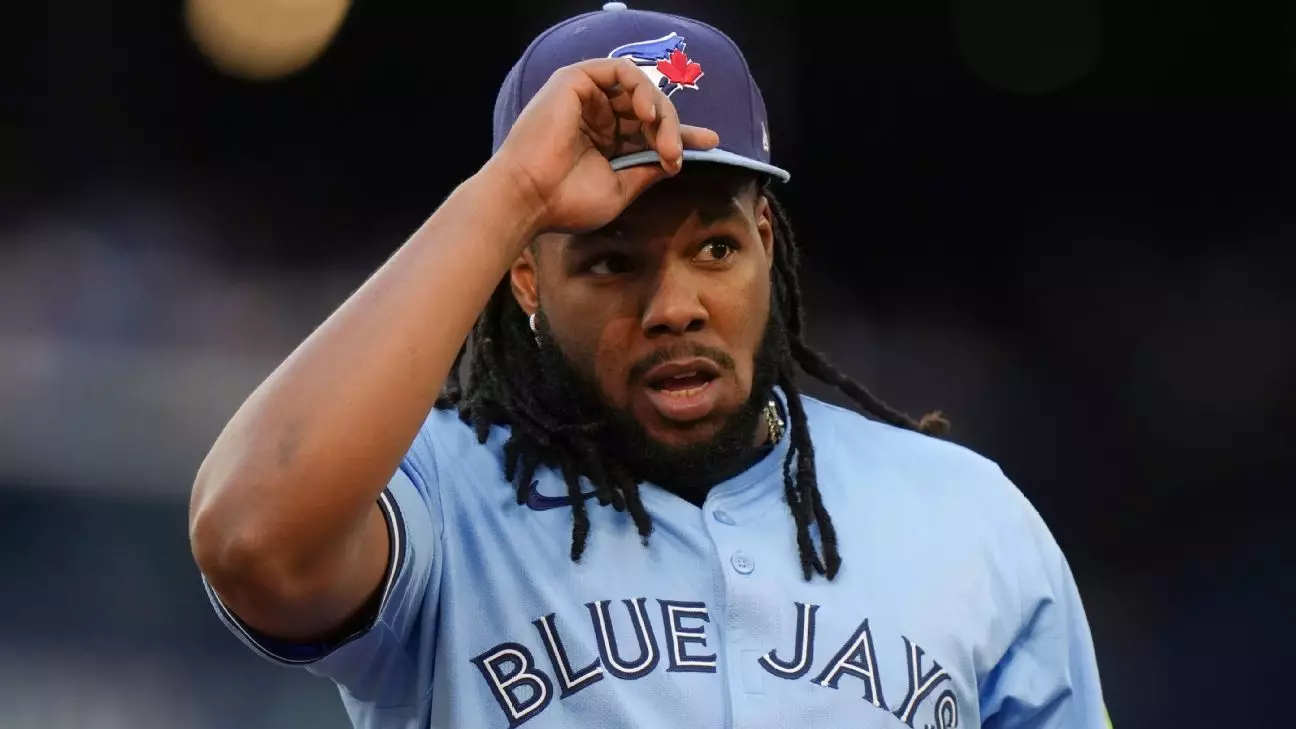The dynamics of Major League Baseball (MLB) contracts are continuously evolving, with the arbitration process playing a pivotal role. This intricate mechanism not only highlights players’ economic value based on their performance but also illustrates the tensions that can arise between organizations and their athletes. Recent developments involving players like Vladimir Guerrero Jr., Framber Valdez, and emerging talents have underscored the significance of arbitration as a cornerstone of the business side of baseball.
Key Arbitration Agreements of the Season
In a noteworthy instance this season, Vladimir Guerrero Jr., first baseman for the Toronto Blue Jays, secured a one-year contract worth $28.5 million—a figure reached through negotiations just before the scheduled exchange of proposed figures by players and teams. This agreement is particularly significant within the context of recent arbitration trends. For reference, Guerrero’s father, the Hall of Famer Vladimir Guerrero, casts a long shadow, yet Jr. is establishing his legacy within the game’s economic landscape. Similarly, Houston Astros pitcher Framber Valdez reached an agreement for $18 million for the upcoming season, demonstrating the increasing financial stakes for talented players in the league.
The recent trend reflects broader changes in how MLB teams value their players’ contributions and set parameters for contracts. Players can pivotally influence their earnings through their performance, as evidenced by this contract cycle, where multiple players reached amicable agreements ahead of potential arbitration hearings.
Guerrero’s contract follows another notable arbitration agreement from last year, where he won a historic $19.9 million award from an arbitration panel after a dispute with the Blue Jays regarding salary expectations. This past decision set a precedent in the arbitration landscape and indicates the trend towards increased player remuneration—a dynamic mirrored by Juan Soto’s monumental $31 million deal last season with the New York Yankees, leading the way for arbitration-eligible players.
Moreover, Tarik Skubal, the younger American League Cy Young Award winner, illustrates this upward shift as he settled for $10.15 million with the Detroit Tigers two seasons before he can explore free agency. These figures illustrate a departure from earlier norms, suggesting teams are becoming more willing to invest significantly in their players earlier in their careers, bolstering their competitive rosters.
The increased value in contracts has prompted many teams to preemptively reach agreements with their players. Outfielders Daulton Varsho and Alejandro Kirk of the Blue Jays also negotiated favorable one-year deals for $8.2 million and $4.6 million, respectively. In a parallel development, the Astros secured contracts for their new third baseman Isaac Paredes and star shortstop Jeremy Pena, demonstrating a proactive approach across the league.
As of January, a notable wave of arbitration-eligible players emerged, totaling 155 players at the beginning of negotiations. Historically, arbitration settlements have been contentious; however, recent years have seen a decline in the number of hearings. Last season featured a shift in success rates, as players achieved a 9-6 record over teams in arbitration, leading to speculation about the future approach of organizations hoping to avoid costly hearings and prolonged negotiations.
Implications for Players and Teams
These agreements not only determine immediate salaries but also set a precedent for future contracts as the league navigates its economic trajectory. As contract negotiations become increasingly contentious, understanding the strategic foresight displayed by players and teams will be critical for those involved in the sport. The shift toward lucrative contracts, particularly for younger talent, raises questions about roster management and financial limits.
As we look forward to the rest of the MLB season, the ramifications of these arbitration outcomes and the preceding negotiations will undoubtedly shape the competitiveness of teams and the economic landscape of baseball for years to come. With players like Guerrero Jr. and Valdez taking center stage, the business of baseball is becoming as compelling as the games themselves, revealing the complex interplay between talent, performance, and financial strategy. The story is far from over, and fans should brace for continued evolution in this dynamic environment.


Leave a Reply